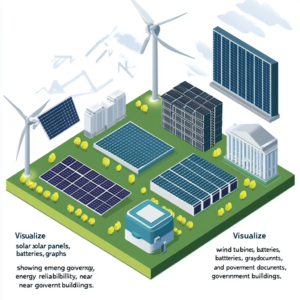
“Watch the Ring of Fire Eclipse Online”
Solar Eclipse Extravaganza: Your Guide to the Spectacular Annular Eclipse on October 2
Here we find ourselves standing on the precipice of something extraordinary! Mark your calendars, set your reminders, and dust off those eclipse glasses because October 2, 2024, is poised to grace us with an out-of-this-world experience: an annular solar eclipse! You know, the kind where you get a glorious ‘ring of fire’ around the Moon – an event so rare and riveting that even the most stoic among us might find ourselves gasping in delight.
Now, if you’re not planning on jetting off to the prime spot to catch this celestial cinema, fear not! We live in an age of magical technology, where you can plop down on your couch, sip a beverage of your choice, and still be front-row at this cosmic show via livestream.
Unwrapping the Mystique: What is an Annular Solar Eclipse?
Before diving headfirst into where and when to catch this marvel, let’s unravel the science behind it. An annular solar eclipse is like that glamorous friend who walks into the room just a tad late but makes all heads turn. What happens is the Moon takes center stage, sneaking between the Earth and the Sun. However, before you yell “Eclipse!” the Moon appears smaller than the Sun because it’s hanging out a bit further away than usual. Hence, instead of snuffing out the Sun completely, it leaves behind a glowing ring around its edges, hence the dramatic moniker – “ring of fire.” It’s a brilliant dance of celestial bodies that paints the sky in a spectacle that is simply unforgettable.
Key Locations and Timing: Where the Magic Happens
If you’re lucky enough to be in the path of this annular eclipse, get ready for a sky-borne show that’ll last a dazzling few minutes. Here are the hot spots you won’t want to miss:
- Easter Island, Chile – Get comfy for approximately 6 minutes and 28 seconds of pure magic.
- Puerto Río Tranquilo, Chile – A splendid 5 minutes and 50 seconds awaits you here.
- Cochrane, Chile – Erase that boredom for about 5 minutes and 40 seconds of cosmic wonder.
- Puerto Deseado, Argentina – Even a brief 3 minutes and 22 seconds of brilliance is well worth it.
But what of those who will find themselves far away, watching from afar? Not to worry! A partial eclipse will still be visible in various parts of South America, across the enchanting Pacific and Atlantic Oceans, and curling its tendrils into the icy landscapes of Antarctica.
Now, let’s talk about when to actually brave outside (or fire up that livestream). Here’s your cheat-sheet to the timing:
- First whispers of a partial eclipse: October 2 at 15:42:59 UTC.
- Full eclipse entrances the stage: October 2 at 16:50:38 UTC.
- Maximum eclipse – the superstar moment: October 2 at 18:45:04 UTC.
- Final curtain call for the full eclipse: October 2 at 20:39:15 UTC.
- The last flicker of a partial eclipse: October 2 at 21:47:00 UTC.
Plan accordingly; you wouldn’t want to miss any part of this spectacle, right?
Catch It Live: How to Watch the Eclipse Online
Just because you can’t physically reach the select spots doesn’t mean you should sulk in disappointment! Thanks to outstanding technology, we have an array of livestreams at our disposal. For instance:
-
Time and Date: This site is teaming up with the Instituto Latinoamericano de Astroturismo to bring you a live-a-thon from Puerto Deseado. Pop over to their website and settle in for some galaxial goodness.
-
EarthSky: This team is kicking off their stream a bit earlier – 12:15 PM CDT (17:15 UTC) – so you can enjoy the partial phase beforehand. They’re also broadcasting from South America, in collaboration with our friends at Time and Date, just to keep the cosmic vibes rolling.
Safety First: Avoiding Eye-Poppable Disasters
Here's the deal – while staring at this marvel is sure to enchant, doing so without the right eye protection can transform your dazzling experience into a nightmarish one. Seriously. If you’re watching in person, make sure to don those solar eclipse glasses or use a proper solar telescope. Looking at the Sun uncovered is essentially begging for trouble. Protect those peepers!
Dive Deeper: Additional Resources
Should your curiosity be zinging like a comet’s tail, there are excellent resources awaiting your visit. For highly detailed information—with interactive maps and timing charts fine-tuned to your local area—check out:
Conclusion: Don’t Let This Pass You By!
The annular solar eclipse of October 2, 2024, promises to be a truly majestic occasion, a celestial spectacle that deserves a prime spot on your calendar. Whether you find yourself directly in the amusement park of annularity or cozied up with popcorn at home, make sure to immerse yourself in this cosmic ballet of shadows and light.
Want to stay up to date with the latest news on celestial events and more? Subscribe to our Telegram channel: @channel_neirotoken. Embrace the wonder, and join the conversation!

